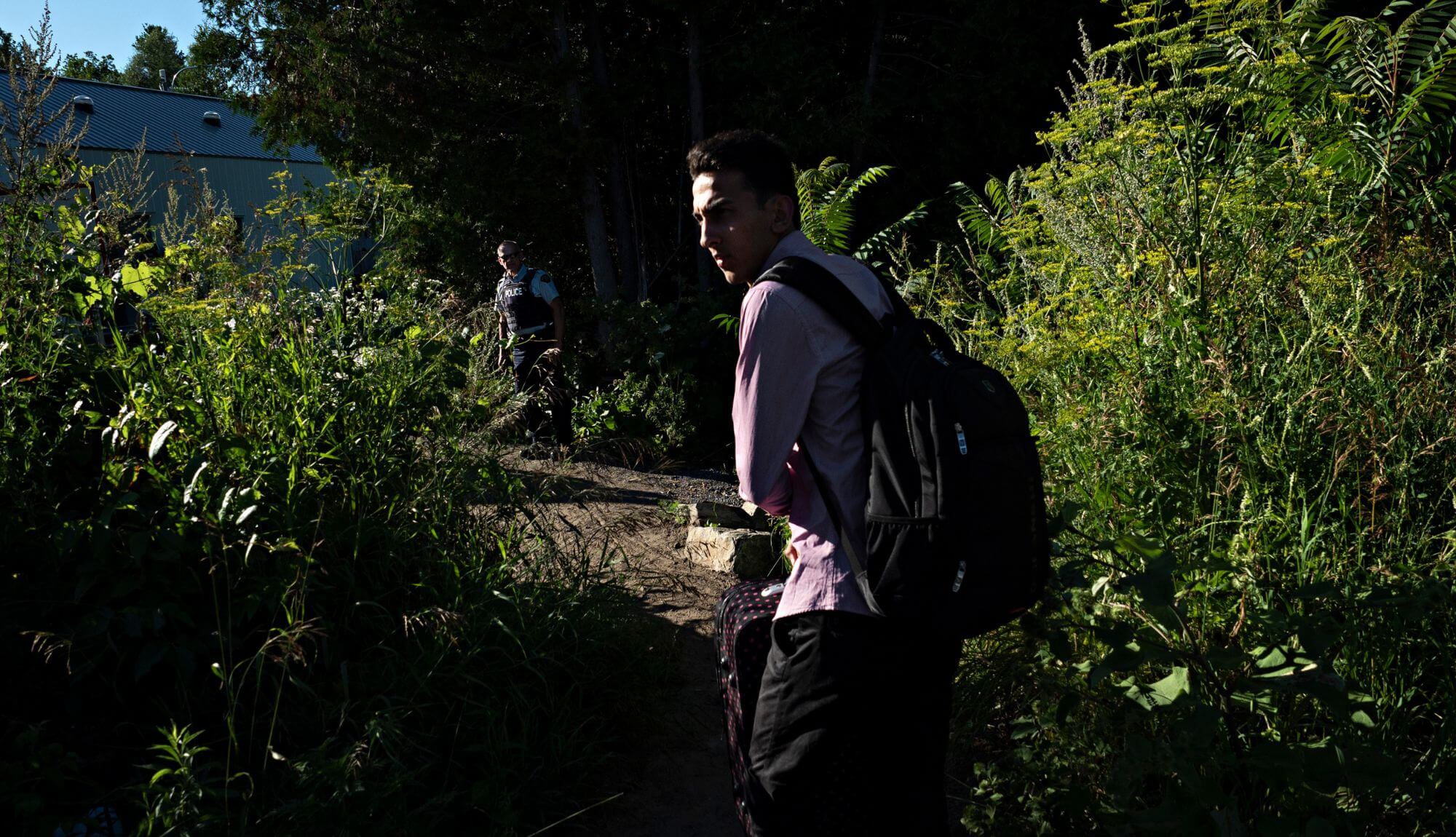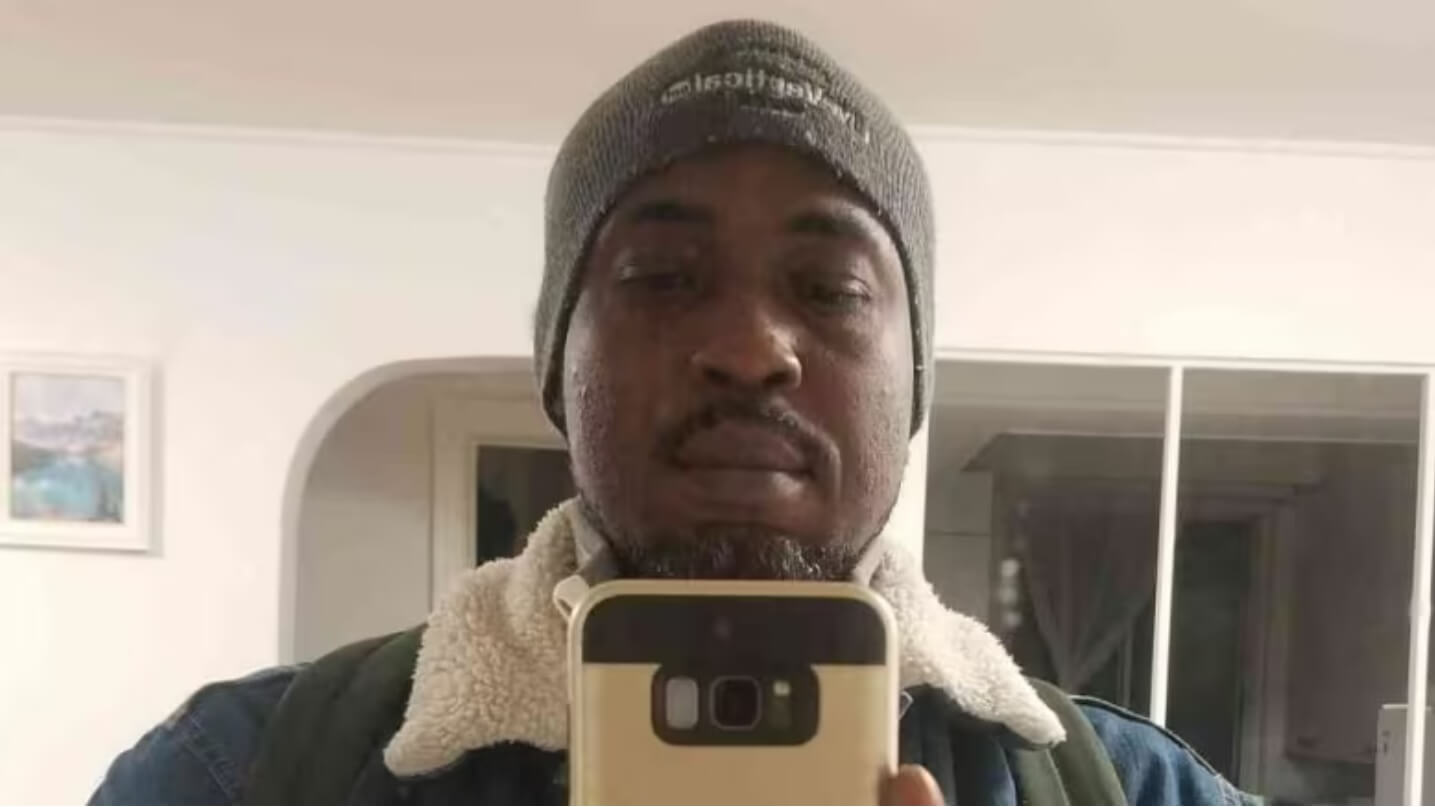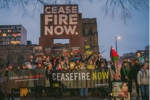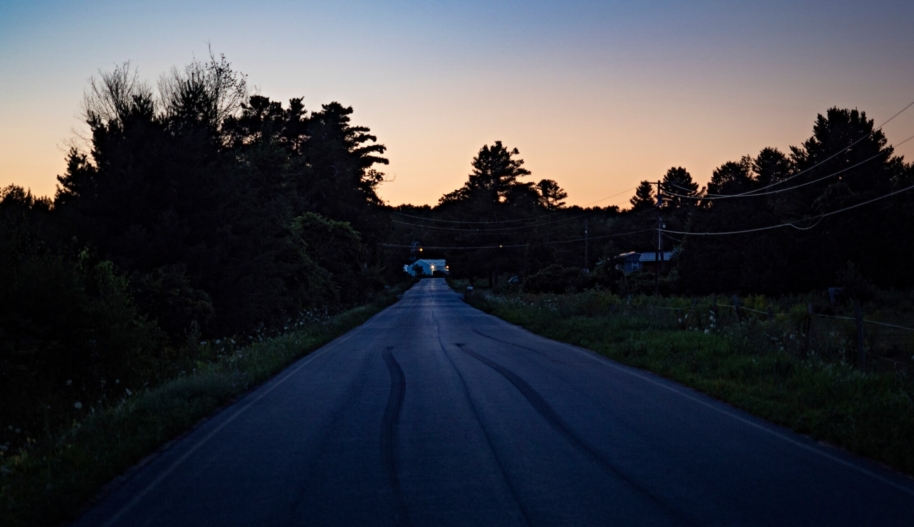This article was written before the government expanded the Safe Third Country Agreement to apply not just at Roxham Road but across the entire border, including between official land ports of entry. Please refer to the Canadian Government’s website for the most recent information about the Safe Third Country Agreement (STCA). You can also read Amnesty’s response to the shameful expansion of the STCA.
A small white obelisk on Roxham Road marks the invisible line that divides Canada from the United States. This small country road located 50 km south of Montreal is an unofficial border crossing.
It is a lifeline for many asylum seekers. But it is also a loophole created by an inhumane Canada-U.S. agreement that makes life even harder for some of the most marginalized people in North America, refugee claimants.
What does the Safe Third Country Agreement do?
The Safe Third Country Agreement (STCA) created the situation at Roxham Road. The agreement between Canada and the US forbids people who arrive at official land ports of entry from making a refugee claim. The premise of the agreement is that they should apply for asylum in the first country they find themselves in.
Canada and the U.S. both see themselves as human rights-respecting countries. The thinking is asylum seekers shouldn’t get to cherry-pick where they make a formal refugee claim. But that reasoning is dubious, for reasons we’ll get into later.
Since the agreement only applies to official land border crossings, asylum seekers search for other places to enter Canada. Other unofficial border crossings such as Roxham Road.
The government is looking for solutions to Roxham Road, but it created the crisis that is taking place there. If Canada wanted to limit irregular crossings, it could end the Safe Third Country Agreement.
Julia Sande, Human Rights Law & Policy Campaigner, Amnesty International Canada
“The government is looking for solutions to Roxham Road, but it created the crisis that is taking place there,” explains Julia Sande, Amnesty International Canada’s Human Rights Law and Policy Campaigner. “If Canada wanted to limit irregular crossings, it could end the Safe Third Country Agreement.”
Amnesty International Canada and the Canadian Council for Refugees want the Canadian government to immediately suspend the STCA.
The Supreme Court of Canada heard from the groups that the agreement is unconstitutional on October 6, 2022. Canada’s highest court is expected to make a decision soon.
Prime Minister Justin Trudeau also plans to raise the issue of renegotiating the STCA with U.S. President Joe Biden, according to CBC News. President Biden will visit Canada on March 23-24, 2023.

Why are people crossing at Roxham Road?
It is not illegal for people to cross at Roxham Road to seek asylum in Canada. In fact, the only way for people to claim asylum in Canada is to be in the country.
People cross at Roxham Road because they don’t have many other options. Many are fleeing wars, persecution, or torture. They are afraid the US will send them back to their country of origin. They are hopeful Canada will protect them.
Roxham Road has become a popular crossing point because people cannot claim asylum at official land borders. But its makeshift nature gives the impression that those crossing there are doing something sneaky or illegal. That perception couldn’t be further from the truth.
Instead, they are slipping through a loophole in an unjust international agreement that violates their human rights. The Safe Third Country Agreement.
Can Roxham Road be closed?
The government could attempt to reduce crossings at Roxham Road by expanding the Safe Third Country Agreement. It could apply across the entire border, not just at official points of entry. However, this would do nothing to stop irregular entries. Instead, it would push people into more precarious crossings.
“Vulnerable migrants are forced to cross into small border communities,” explains Ketty Nivyabandi, the Secretary General of Amnesty International Canada, “at times in the dead of winter, risking frostbite, hypothermia, or worse, simply to have their claims for refugee protection heard.”
A perilous calculation
Crossing at unofficial crossings like Roxham Road can be dangerous. Those who come this way make a perilous calculation. They weigh the risks of the journey against the risks of remaining in the United States.
For at least one asylum seeker, the trip ended in death. Haitian refugee claimant, Fritznel Richard, heard Canada was more welcoming than the United States.
Richard’s wife Guenda explained to CBC News, they hoped it would be easier to get residency in Canada. After months of struggling to make ends meet in Montreal, she and their 2-year-old son left for Florida to stay with family. Richard remained hopeful he would receive a work permit and stayed behind in Montreal.
On December 23, 2022, he crossed back into the United States via Roxham Road with the help of a smuggler. He wanted to visit his family for the holidays. However, a patrolling U.S. Border Services helicopter spotted his frozen body more than a week later.

My life changed when I met Richard. He’s somebody that always gives you strength and was always trying his best. He’d say, ‘This is what we’re going to do. It’s going to work out, we’re going to get out of this situation. Don’t be discouraged. Keep your head up.
Richard’s wife Guenda, CBC News
“My life changed when I met Richard,” his wife Guenda told CBC News. He’s somebody that always gives you strength and was always trying his best. He’d say, ‘This is what we’re going to do. It’s going to work out, we’re going to get out of this situation. Don’t be discouraged. Keep your head up.'”
Asylum seekers who cross at Roxham Road often feel they don’t have other options. The only way for them to seek asylum in Canada is by being here. People generally present themselves to authorities as soon as they arrive to begin the process of making their claim.
A political ‘lightening rod’
Roxham Road and other irregular border crossings have long been a political “lightning rod” for federal and provincial politicians. Official opposition leader Pierre Poilievre wants the government to close the makeshift crossing. Quebec Premier François Legault blames it for his province’s strained social services.
Meanwhile, every day that goes by, hundreds of asylum seekers risk everything trying to cross at irregular border crossings.
The immigration debate in Canada has long been fueled by fear, xenophobia, and racism. Laws and agreements like the STCA are underpinned by systemic discrimination that determines who are “good” immigrants (often white Europeans) and who are “bad.” Immigration policies are also used as an excuse to surveil, control, and detain Black and Indigenous peoples.
- Listen to Amnesty’s Podcast Rights Back at You for more about surveillance
- Jail deaths underscore the lethal nature of immigration detention
- Trump’s Proposal to “Halt Immigration” Is Fueled by Bigotry and Xenophobia
“Canada’s politicians who restrict Black people’s movements aren’t simply bending to the will of their more powerful neighbours,” writes author Desmond Cole in his book The Skin We’re In. “The elites in both countries have the shared goal of white settler dominance, so it makes sense to work together.”
Crossings approach a record level
About 40,000 people entered Canada through irregular border crossings like Roxham Road in 2022, according to CBC News. In 2023, the number of people crossing this way approaches record levels, with five thousand people crossing in January alone. These people represent about 42 per cent of asylum seekers in the country.
In Canada, the overall number of refugee claims increased in recent years, but that’s to be expected. The number of people worldwide who have escaped war, persecution and violence has also gone up sharply.
At the end of 2021, the United Nations Refugee Agency reported 89.3 million people worldwide were forcibly displaced. They were fleeing violence, conflict, and persecution. In comparison, the influx in Canada is extremely insignificant compared to the number of displaced people worldwide.
Many countries with much less wealth, such as Turkey or Colombia, host millions of people on the move. That’s far more than Canada.

End the Safe Third Country Agreement
Refugees, activists, and human rights organizations have long called for the end of the nearly 20-year-old STCA.
A coalition of three human rights organizations including Amnesty is challenging the agreement before the Supreme Court of Canada. The agreement, the coalition argues, violates Canada’s human rights obligations under the Charter of Rights and Freedoms and international law.
Withdrawing from the STCA is one of the most impactful steps Canada can take to end irregular border crossings, allowing people to make refugee claims in a humane, safe and orderly manner.
Ketty Nivyabandi, Secretary General of Amnesty International Canada
“Withdrawing from the STCA is one of the most impactful steps Canada can take to end irregular border crossings,” says Ketty Nivyabandi, Secretary General of Amnesty International Canada, “allowing people to make refugee claims in a humane, safe, and orderly manner.”
This is the second time the Safe Third Country Agreement is being challenged. In both cases, the challenges were successful at the Federal Court. However, the Federal Court of Appeal later overturned those decisions on technical grounds.
It wasn’t until 2021 that the Supreme Court announced it would weigh in on the constitutionality of the STCA. This marked a significant breakthrough in Amnesty International’s campaign for the just and compassionate treatment of people seeking refuge.
United States not safe for all refugee claimants
The United States is not safe for all refugee claimants. A new law demonstrates that the United States does not guarantee the human rights of those looking for protection. It should not be relied on to discharge Canada’s human rights obligations.
When Canada turns people away under the STCA, they are often subject to detention in horrific conditions in the USA. Migrants also face deportation back to their home country. Even those people whose refugee claim would have been accepted in Canada could be deported.
“The STCA cruelly bars many people from seeking refugee protection in Canada,” says Julia Sande from Amnesty International Canada. “Many refugee claimants sent back to the United States are detained in shocking and horrific conditions.”
“Forcing refugee claimants back to the US means condemning some of them to detention in atrocious conditions and a possible return to persecution in their countries of origin,” says the Canadian Council for Refugees in a statement on their website.
The statement also notes: “Racial equity demands that Black and brown people also have an opportunity to arrive in Canada in a regular, dignified way. They should not be forced to resort to an irregular crossing, on many occasions risking their lives and their family’s lives in harsh winter conditions and be demonized for doing so.”
Join Amnesty International and send an urgent message to the Canadian government to withdraw from the STCA immediately. Take action now to let them know you stand in solidarity with asylum seekers.
Learn more
Top Featured Photo: A view down Roxham Road towards the border crossing into Canada in Champlain, New York. July 18, 2018. (Photo by Andre Malerba for The Washington Post via Getty Images)













